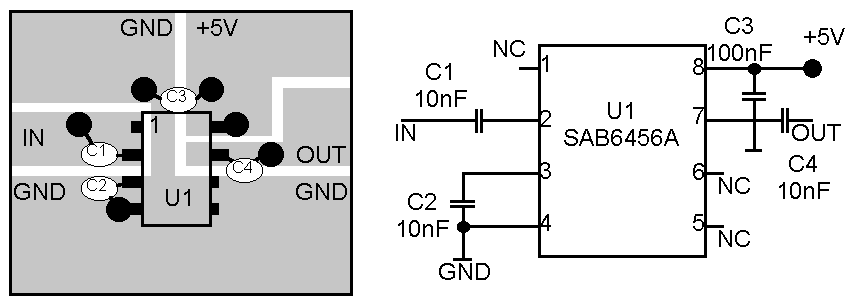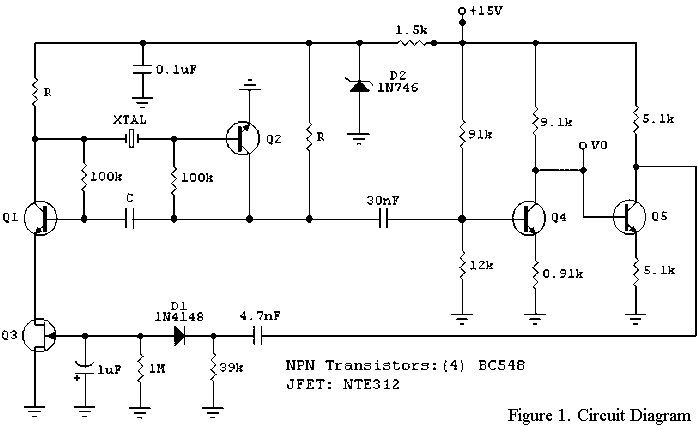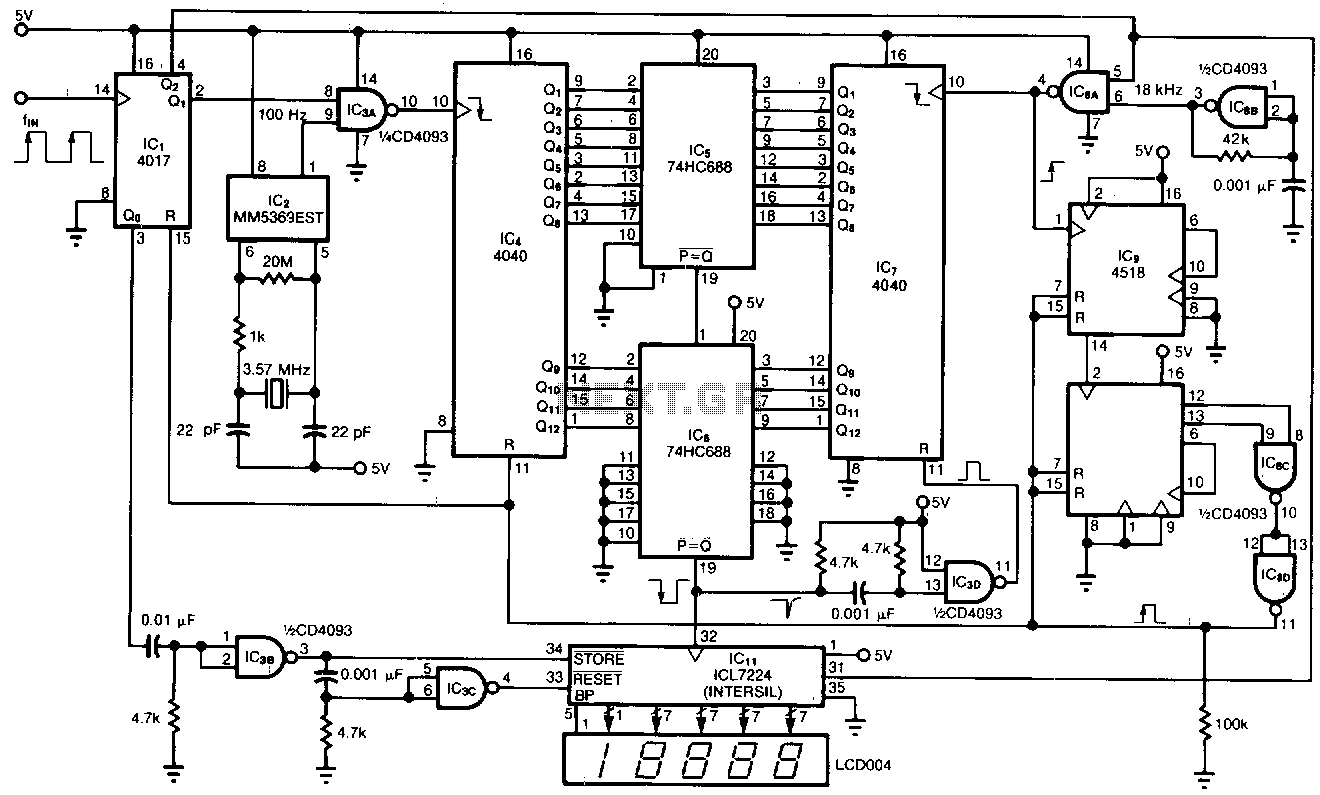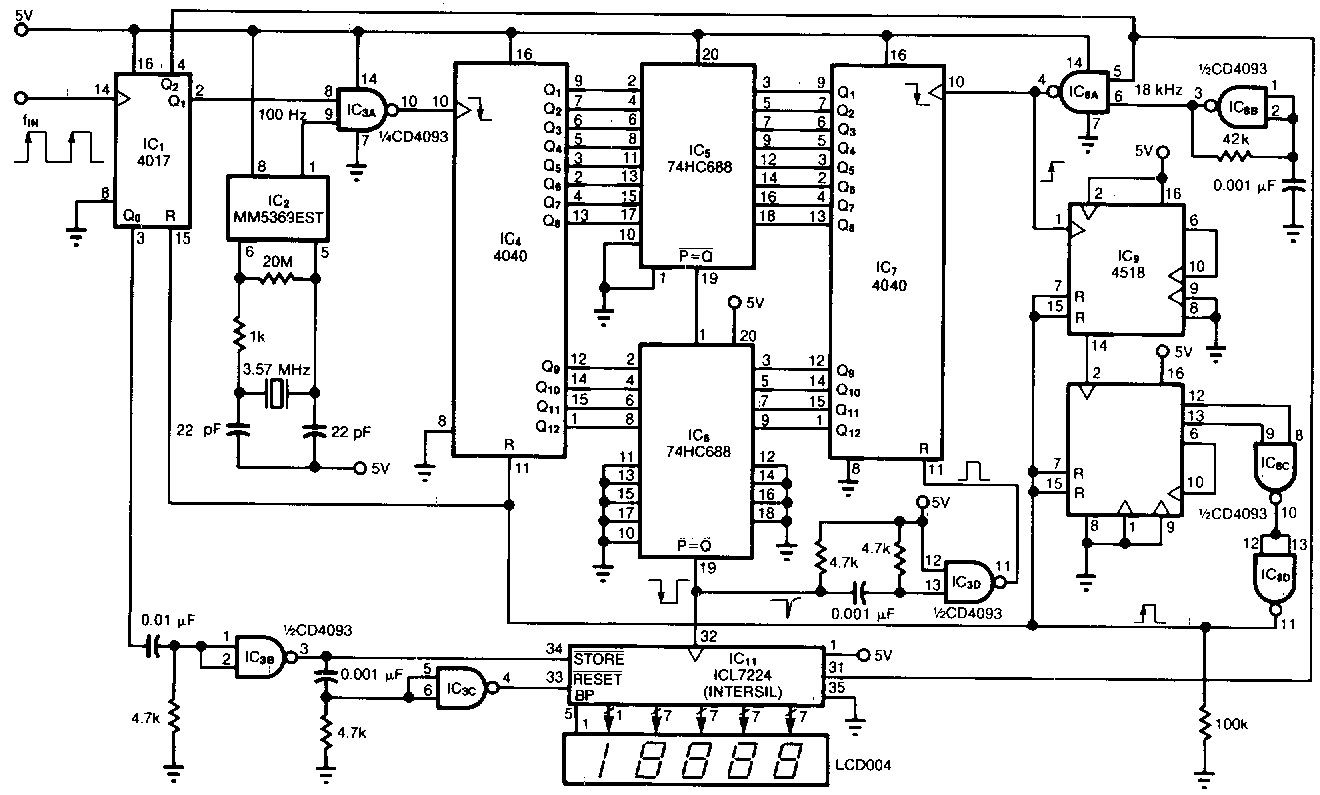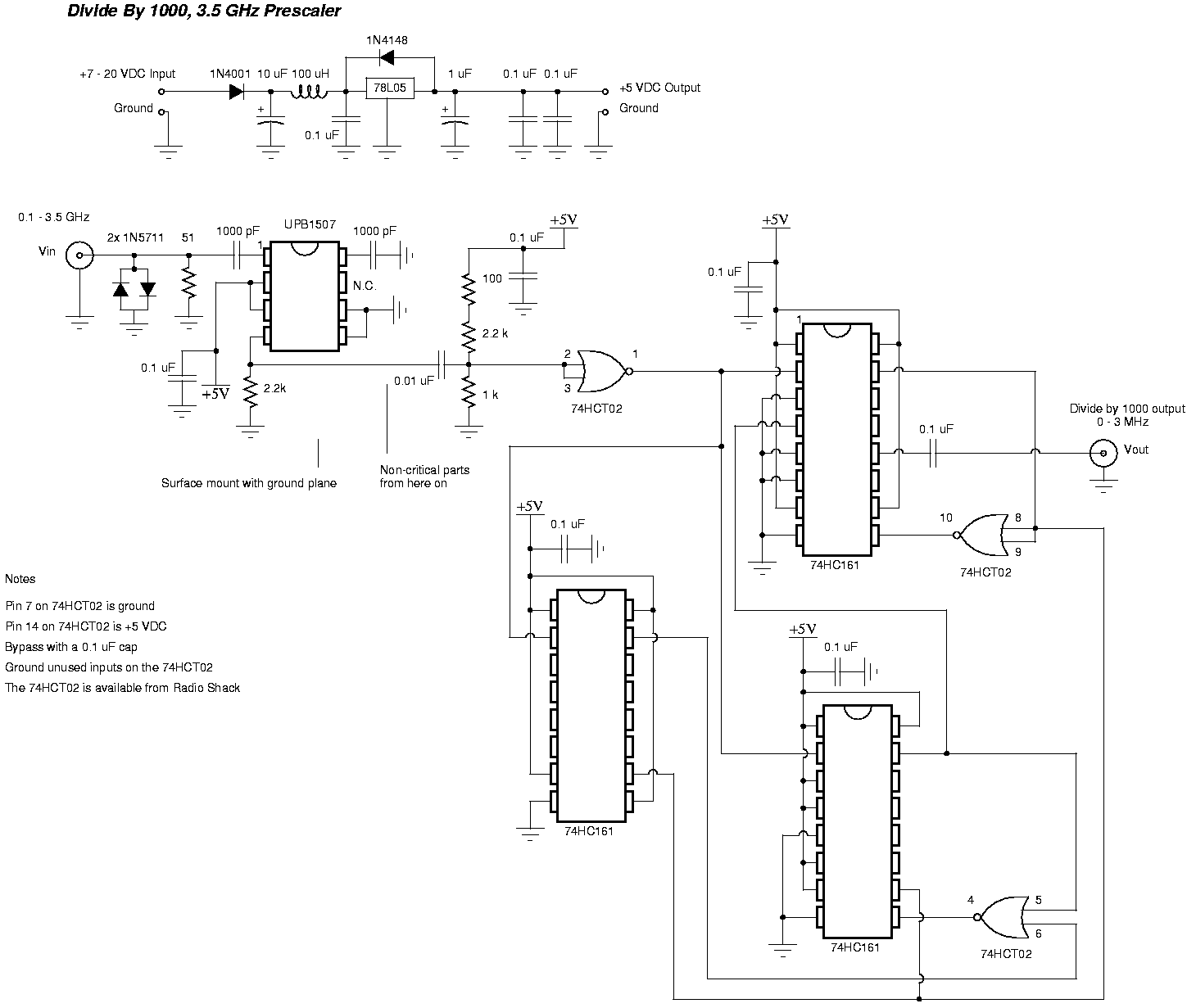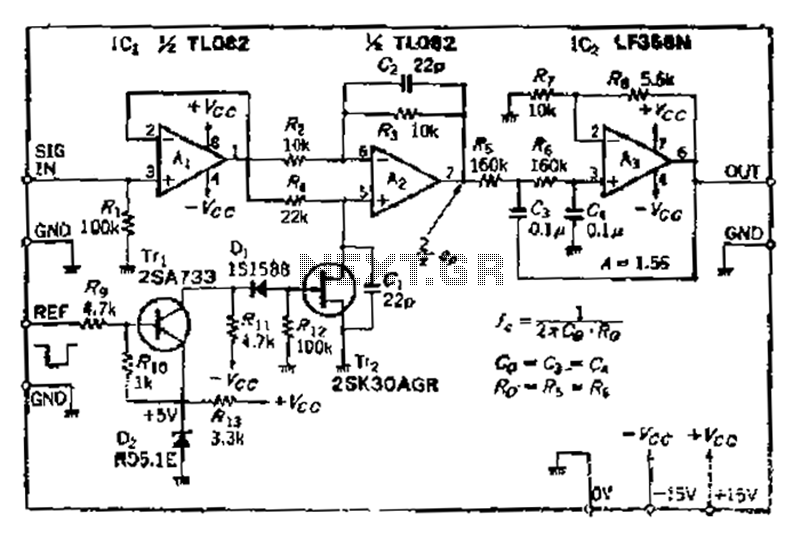
Low-Frequency Prescaler
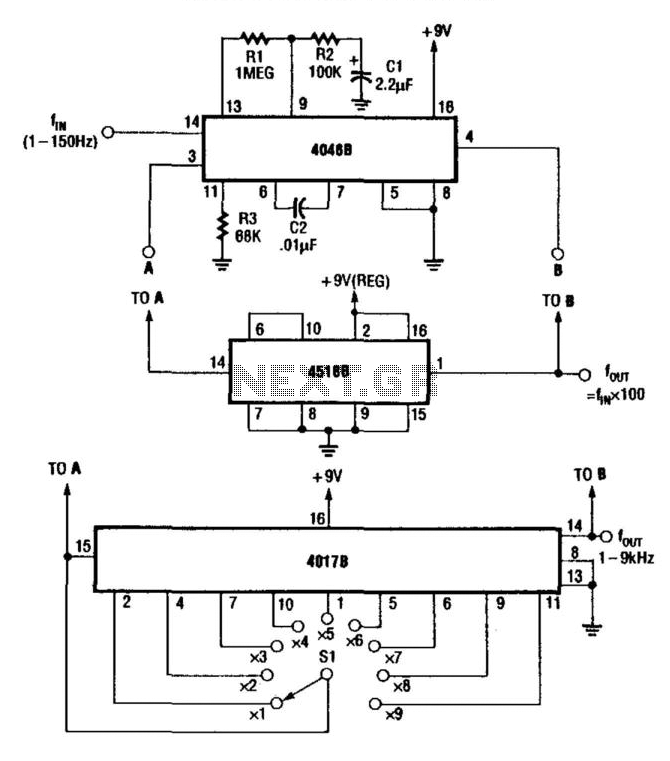
For multiplying frequencies in the 1 to 150 Hz range, this circuit utilizes a 4046B phase-locked loop (PLL) and a 100 prescaler. The output from the voltage-controlled oscillator (VCO) is phase-locked to the low-frequency input. This configuration facilitates the use of a frequency counter to measure low-frequency signal frequencies. Additionally, by incorporating a 4017B decade counter and a 1 kHz clock signal, the circuit can function as a 1 to 9 kHz frequency synthesizer or as a x10 frequency multiplier.
The circuit operates primarily using the 4046B, which is a versatile PLL integrated circuit. The PLL configuration allows for precise frequency multiplication by maintaining a constant phase relationship between the input signal and the VCO output. The 100 prescaler reduces the frequency of the input signal, enabling the 4046B to effectively manage lower frequencies within its operational limits.
The VCO within the 4046B generates an output frequency that is determined by the control voltage applied to it. This output is then phase-locked to the incoming low-frequency signal, ensuring that the output frequency is a multiple of the input frequency. The phase comparator within the 4046B adjusts the control voltage based on the phase difference between the input signal and the VCO output, achieving stable frequency multiplication.
The subsequent stage utilizes a 4017B decade counter, which is designed to count pulses and can divide the frequency output from the VCO. By applying a 1 kHz clock signal to the 4017B, the circuit can generate a range of output frequencies from 1 kHz to 9 kHz, depending on the count configuration. This flexibility allows the circuit to be used not only as a frequency multiplier but also as a synthesizer, producing various frequency outputs for different applications.
In summary, the combination of the 4046B PLL, a prescaler, and the 4017B counter creates a robust circuit capable of frequency multiplication and synthesis over a specified range. This design is particularly useful in applications requiring precise frequency measurements and signal generation in the low-frequency domain. For multiplying frequencies in the 1-to 150-Hz range, this circuit uses a 4046B and a 100 prescaler. The VCO output is phaselocked to the low-frequency input. This simplifies use of a frequency counter to measure LF signal frequencies. By using a 4017B and a 1-kHz. the circuit can be used as a 1-to 9-kHz frequency synthesizer or as a x10 frequency multiplier. 🔗 External reference
The circuit operates primarily using the 4046B, which is a versatile PLL integrated circuit. The PLL configuration allows for precise frequency multiplication by maintaining a constant phase relationship between the input signal and the VCO output. The 100 prescaler reduces the frequency of the input signal, enabling the 4046B to effectively manage lower frequencies within its operational limits.
The VCO within the 4046B generates an output frequency that is determined by the control voltage applied to it. This output is then phase-locked to the incoming low-frequency signal, ensuring that the output frequency is a multiple of the input frequency. The phase comparator within the 4046B adjusts the control voltage based on the phase difference between the input signal and the VCO output, achieving stable frequency multiplication.
The subsequent stage utilizes a 4017B decade counter, which is designed to count pulses and can divide the frequency output from the VCO. By applying a 1 kHz clock signal to the 4017B, the circuit can generate a range of output frequencies from 1 kHz to 9 kHz, depending on the count configuration. This flexibility allows the circuit to be used not only as a frequency multiplier but also as a synthesizer, producing various frequency outputs for different applications.
In summary, the combination of the 4046B PLL, a prescaler, and the 4017B counter creates a robust circuit capable of frequency multiplication and synthesis over a specified range. This design is particularly useful in applications requiring precise frequency measurements and signal generation in the low-frequency domain. For multiplying frequencies in the 1-to 150-Hz range, this circuit uses a 4046B and a 100 prescaler. The VCO output is phaselocked to the low-frequency input. This simplifies use of a frequency counter to measure LF signal frequencies. By using a 4017B and a 1-kHz. the circuit can be used as a 1-to 9-kHz frequency synthesizer or as a x10 frequency multiplier. 🔗 External reference
